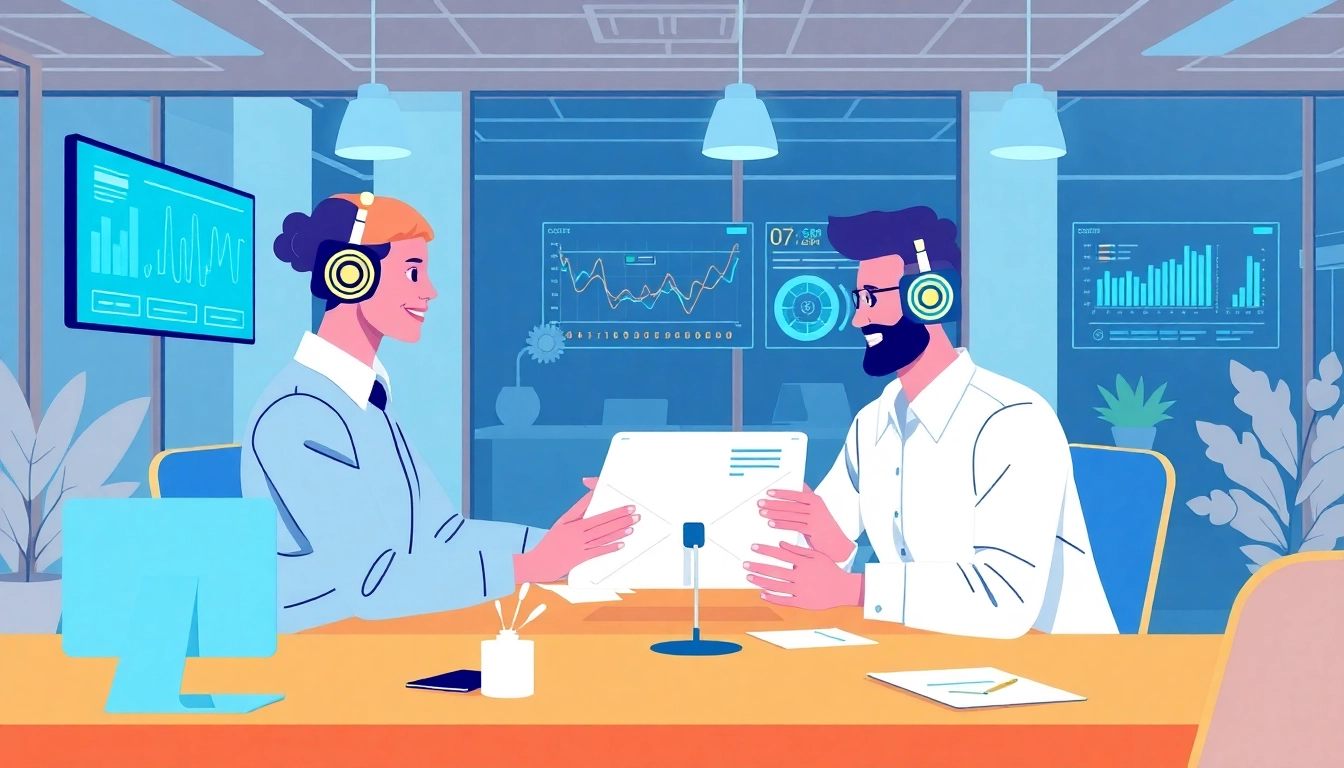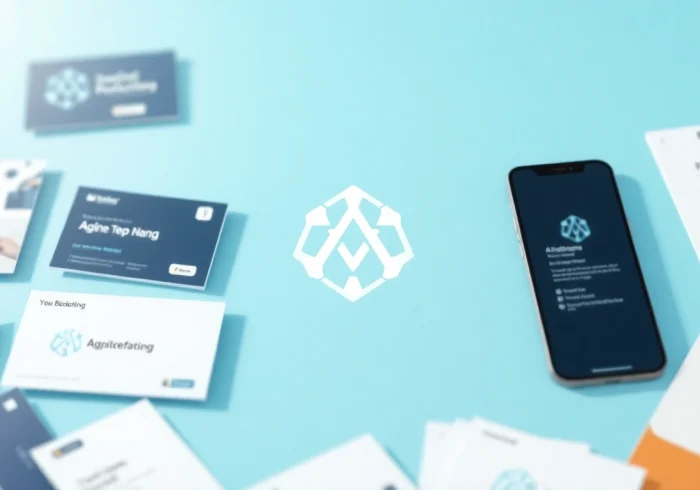Understanding AI Outreach Agents
What Are AI Outreach Agents?
AI outreach agents are advanced technological solutions designed to assist sales representatives by automating repetitive tasks, thereby optimizing their workflows. These agents leverage artificial intelligence to execute manual operations, such as data entry, follow-up communications, meeting scheduling, and even prospect research. Essentially, they take over the “busy work” that typically consumes a significant portion of sales professionals’ time, allowing them to concentrate on crucial aspects of their roles, like building relationships and closing deals. The integration of AI outreach agents into sales processes signifies a shift towards a more efficient sales strategy, driven by data and automation.
Core Functions and Benefits
The core functions of AI outreach agents can be broken down into several key areas:
- Task Automation: Eliminating mundane tasks like sending reminder emails or updating CRM records, which often distract sales teams from more productive engagements.
- Data Analysis: Using machine learning algorithms to process vast amounts of data, providing insights that help sales teams prioritize leads and understand customer behavior.
- Personalization: Crafting personalized communication based on past interactions or behavioral data, enhancing customer engagement and relationship building.
- Integration: Seamlessly integrating with existing sales tools and platforms to ensure smooth workflow transitions and data consistency.
- Scalability: Allowing businesses to scale their outreach efforts without needing to proportionally increase their workforce.
The benefits of employing AI outreach agents are substantial. Primarily, organizations can experience heightened productivity as sales reps can dedicate their time to core sales activities rather than administrative duties. This efficiency not only leads to higher sales performance but also improves employee satisfaction, as team members engage in less monotonous work. Moreover, companies often witness increased conversion rates due to more effective, personalized outreach strategies fueled by AI insights.
Real-World Applications in Sales
The use of AI outreach agents in the sales sector is increasingly prevalent, with many organizations reporting substantial improvements. For instance, companies that deploy AI tools see reduced response times and enhanced lead engagement through automated follow-ups. These tools also enable sales teams to analyze potential customer data, resulting in tailored presentations that resonate with the specific needs and expectations of prospects.
Additionally, AI outreach agents have proven effective in identifying high-potential leads by analyzing engagement patterns and previous interactions. This prioritization helps sales teams focus their efforts where they are most likely to yield results. Case studies have shown that businesses integrating AI outreach strategies experience increased lead conversion rates ranging from 30% to over 50%, highlighting the transformative impact of automation within sales frameworks.
Implementing AI Outreach Agents
Steps to Integrate AI into Your Sales Team
Integrating AI outreach agents into your sales team is a multi-faceted process that requires careful planning and execution. Here are the essential steps to consider when implementing this technology:
- Assess Your Needs: Evaluate the specific tasks that consume excessive time and resources. This will help you identify which areas AI can most effectively streamline.
- Choose the Right AI Tool: Research various AI outreach platforms and select one that aligns with your sales processes and technology stack. Factors to consider include ease of integration, user-friendliness, and the range of features available.
- Train Your Team: Provide thorough training for your sales representatives on how to utilize the AI tools effectively. This will enhance adoption rates and ensure that your team understands how to maximize the technology’s potential.
- Monitor Performance: Establish KPIs to measure the effectiveness of AI integration. Track metrics such as response times, conversation rates, and overall sales performance.
- Iterate and Optimize: AI tools require regular adjustments based on performance data. Feedback from sales reps should be collected to refine processes and address any operational hurdles.
Common Challenges and Solutions
While implementing AI outreach agents can offer numerous advantages, organizations often encounter challenges during this transition. Here are some common obstacles along with potential solutions:
- Resistance to Change: Employees might hesitate to adopt new technologies. Solution: Emphasize the benefits of AI in enhancing productivity and alleviating repetitive tasks, coupled with comprehensive training.
- Data Quality Issues: Poor data quality can hinder the effectiveness of AI tools. Solution: Conduct regular data audits and cleaning processes to ensure the accuracy of information flowing into the AI system.
- Integration Difficulties: Integrating AI solutions with existing systems can be complex. Solution: Choose AI platforms with strong integration capabilities or enlist the help of technical experts to facilitate a smoother transition.
- Over-Reliance on Automation: Teams may become overly reliant on AI tools, neglecting personal relationships with clients. Solution: Balance AI’s role with personal touchpoints, ensuring human interaction remains a significant part of the outreach process.
Measuring the Impact on Productivity
Once AI outreach agents are deployed, organizations must establish metrics to gauge their impact on overall productivity and sales outcomes. Key Performance Indicators (KPIs) to consider may include:
- Lead Conversion Rate: Measure the percentage of leads that progress to closed deals.
- Response Time: Monitor how quickly responses are generated post-outreach.
- Sales Cycle Length: Evaluate any changes to the duration of the sales cycle following AI implementation.
- Employee Satisfaction: Conduct surveys to gauge how sales reps feel about their workload and their interactions with the new system.
- Overall Revenue Growth: Assess whether there has been an uptick in revenue as a result of leveraging AI outreach strategies.
Regularly reviewing these metrics will give insights into the effectiveness of the AI outreach agents and help in further refining the approach to maximize benefits.
Comparative Analysis: AI Outreach Tools
Top Competitors in the Market
The market for AI outreach agents is competitive, featuring several strong players. Primarily, platforms like Outreach, Regie.ai, and Reply.io exemplify best practices in AI integration for sales outreach.
Outreach, for instance, offers robust capabilities for automating communication tasks while providing analytical insights to refine outreach strategies. Their focus on maximizing seller productivity through seamless integration of AI tools has solidified their reputation in the field. Regie.ai, on the other hand, is known for its all-in-one prospecting platform, emphasizing a centralized point for sales communications, including AI interface support to enhance workflow. Similarly, Reply.io focuses on multichannel campaigns and incorporates AI to automate the sales outreach process across different platforms.
Feature Comparison
To better appreciate the differences between leading AI outreach tools, consider comparing their key features:
| Platform | Key Features | Integration Capabilities |
|---|---|---|
| Outreach | Automates follow-ups, data analysis, comprehensive reporting | CRM, email, analytics – seamless integration |
| Regie.ai | All-in-one platform, social outreach, AI assistance | CRMs, multiple communication channels |
| Reply.io | Multichannel outreach, advanced analytics, lead finding | Multiple CRM’s and email platforms |
Understanding these features and integrations can help businesses select a solution that best matches their specific requirements and goals in enhancing sales outreach effectiveness.
User Feedback and Reviews
User feedback is often one of the best indicators of an AI outreach tool’s effectiveness. Platforms like G2 or Capterra can provide firsthand experiences from other users. Notably, Outreach typically receives high praise for its user-centric design and analytical capabilities, while Regie.ai is often highlighted for simplifying the prospecting process. Users frequently comment on the efficacy of Reply.io’s multichannel outreach capabilities and the ability to automate repetitive tasks.
Researching user reviews and participating in forums can help businesses gain valuable insights into the real-world applications of these tools, assisting them in making informed decisions when it comes to adopting AI solutions for their outreach efforts.
Future Trends in AI Outreach
Predictions for AI in Sales
As AI technology continues to evolve, several trends will likely shape the future of AI outreach agents in sales. One prediction is the enhancing capabilities of predictive analytics. By leveraging big data, we can expect more advanced predictions regarding customer behavior and preferences, allowing for sharper targeting in outreach strategies.
Another trend will be the increased adoption of natural language processing (NLP). As these technologies mature, they will enable AI agents to conduct more human-like conversations, responding intelligently to customer inquiries and adjusting their approach based on real-time interactions.
Technological Advancements to Watch
The sales industry can also expect advancements in machine learning algorithms that will continue to improve the efficiency and accuracy of AI tools. As these technologies become more sophisticated, we will see an increase in AI’s ability to perform complex tasks that were once reserved for human representatives.
Additionally, the integration of AI-driven chatbots is on the rise, facilitating real-time engagement and support for customers. Chatbots using AI will become more common as companies strive to improve their customer service and responsiveness, further blurring the lines between automated support and human interaction.
Preparing for an AI-Driven Market
To stay competitive in an increasingly AI-driven market, businesses must prioritize the adoption of AI outreach agents. This preparation should start by fostering a culture of adaptation and agility within sales teams. Training staff members to embrace AI tools will be essential, and organizations must regularly review and iterate on their AI strategies based on performance metrics and changing market conditions.
Moreover, companies should be vigilant about data privacy and compliance regulations as they navigate the complexities of employing AI technologies. Implementing robust data governance protocols will ensure the ethical use of AI, helping to build customers’ trust and confidence in the brand.
Conclusion: The Role of AI Outreach Agents in Modern Business
Key Takeaways
The advent of AI outreach agents signifies a transformative shift in the sales landscape. By automating routine tasks and providing actionable insights, these tools empower sales teams to enhance productivity, improve customer engagement, and ultimately drive revenue growth. Understanding the capabilities, implementing effective strategies, and navigating challenges are essential elements for a successful integration of AI in sales operations.
Final Thoughts on Adoption
As businesses increasingly adopt AI technologies, those who lag risk falling behind in terms of efficiency and effectiveness in outreach efforts. Effective training, robust technology selection, and a keen understanding of the sales process will be crucial for harnessing the full potential of AI outreach agents.
Call to Action for Businesses
For organizations looking to enhance their customer engagement strategies and improve their sales efficiency, now is the time to explore the integration of AI outreach agents into their operations. By taking advantage of these innovative technologies, businesses can position themselves at the forefront of the industry, ready to navigate the future of sales with confidence.



